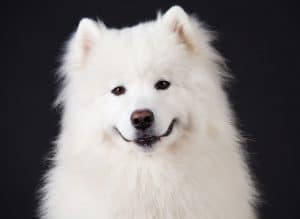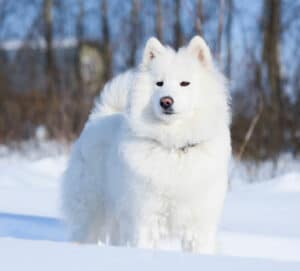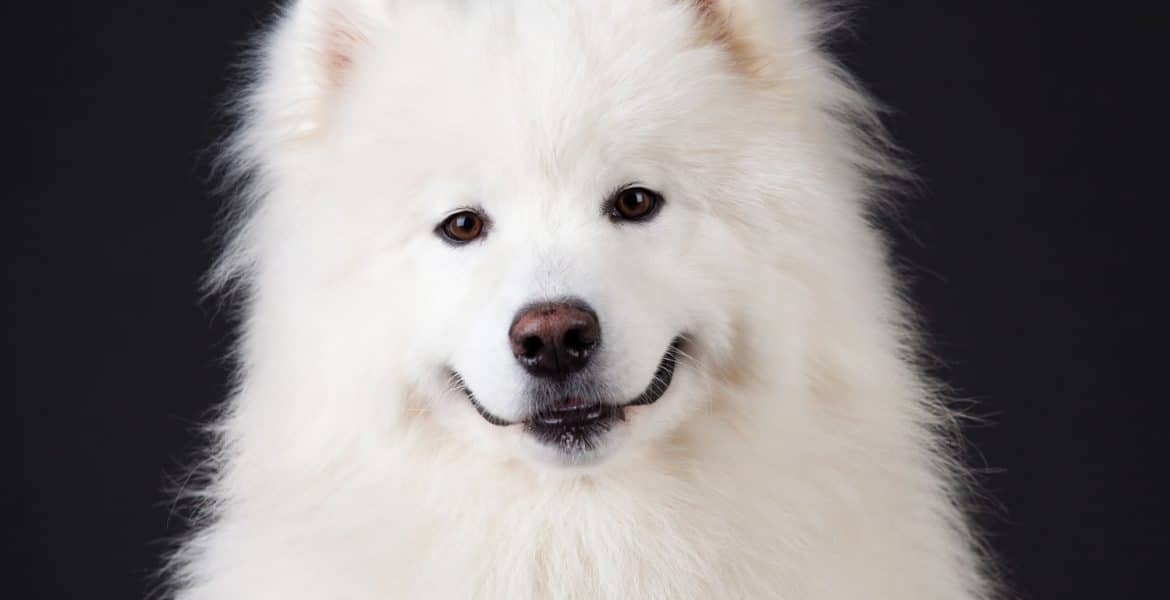 Samoyeds are listed as one of the ancient dog breeds. They have been bred and trained for at least 3,000 years. They originate from Siberia, where they worked with hunters and fishermen called Samoyeds. Their duties included hunting for reindeer, guarding camps and pulling sleds.
Samoyeds are listed as one of the ancient dog breeds. They have been bred and trained for at least 3,000 years. They originate from Siberia, where they worked with hunters and fishermen called Samoyeds. Their duties included hunting for reindeer, guarding camps and pulling sleds.
Their sledding ability was used extensively in exploration. The breed helped in missions exploring the North and South Pole. In 1889 Robert Scott introduced them to England. From there they spread across the world. Today they are enjoyed as pets and working dogs. They are often put to work as herding dogs, and from time to time make an appearance in agility competitions.
Samoyeds are not overly large dogs, but do possess a great amount of strength and stamina. They have a small, pointed nose, dark eyes and small, upright ears. Their tails are one of their more distinguishing features. It is held over and resting on the back but not curled up. When a Samoyed is relaxed the tail will fall a little, but when they’re alert it will return to the back. When sleeping in cold weather the Samoyed will pull its tail over its nose for more warmth. Samoyeds weigh around 20 to 25 kilograms and stand from 50 to 56 centimetres high.
As would be expected from cold climate dog, the Samoyed’s coat is double layered and thick. At first glance the topcoat appears pure white, but on closer examination you’ll be able to see some silver hues. The undercoat is short and dense and tends to shed heavily once or twice a year, a seasonal process which is sometimes referred to as “blowing” their coat. For the rest of the year shedding will continue to occur and the hair will have a tendency to stick to clothes and furniture. Regular grooming is absolutely essential to prevent the coat becoming matted and tangled. Daily brushing will help to prevent this.
 Samoyeds often look alert and happy. This is an accurate description of their temperament as well. They’re extremely friendly dogs and will welcome friends, family, and even burglars with equal enthusiasm. Because of this they are truly dreadful guard dogs. They do enjoy barking, however, and may serve as an alarm system. If not properly trained, though, this barking can move from a warning system to a never-ending headache.
Samoyeds often look alert and happy. This is an accurate description of their temperament as well. They’re extremely friendly dogs and will welcome friends, family, and even burglars with equal enthusiasm. Because of this they are truly dreadful guard dogs. They do enjoy barking, however, and may serve as an alarm system. If not properly trained, though, this barking can move from a warning system to a never-ending headache.
From the moment they’re born, Samoyeds are playful. This trait does not diminish with age. They make excellent companions and wonderful family dogs. Because of their herding instincts, they do have a tendency to try to herd children. This may not be a sought after quality if small children are members of your family. They’re also the product of countless generations of sled dogs, so it should come as no surprise if they try to pull you along behind them when you go for a walk.
Samoyeds can be susceptible to hip dysplasia, eye problems and diabetes. They can also be prone to a genetic renal disease called Samoyed Hereditary Glomerulopathy. Despite this, they do have a rather long life expectancy, anywhere from 12 to 15 years.
This friendly breed usually gets along just fine with other dogs. Family pets are usually greeted with equal friendliness, especially if they have been present since the Samoyed was a puppy. Keep in mind, though, this breed does have an instinct to hunt. This can cause problems if you keep small pets around.


